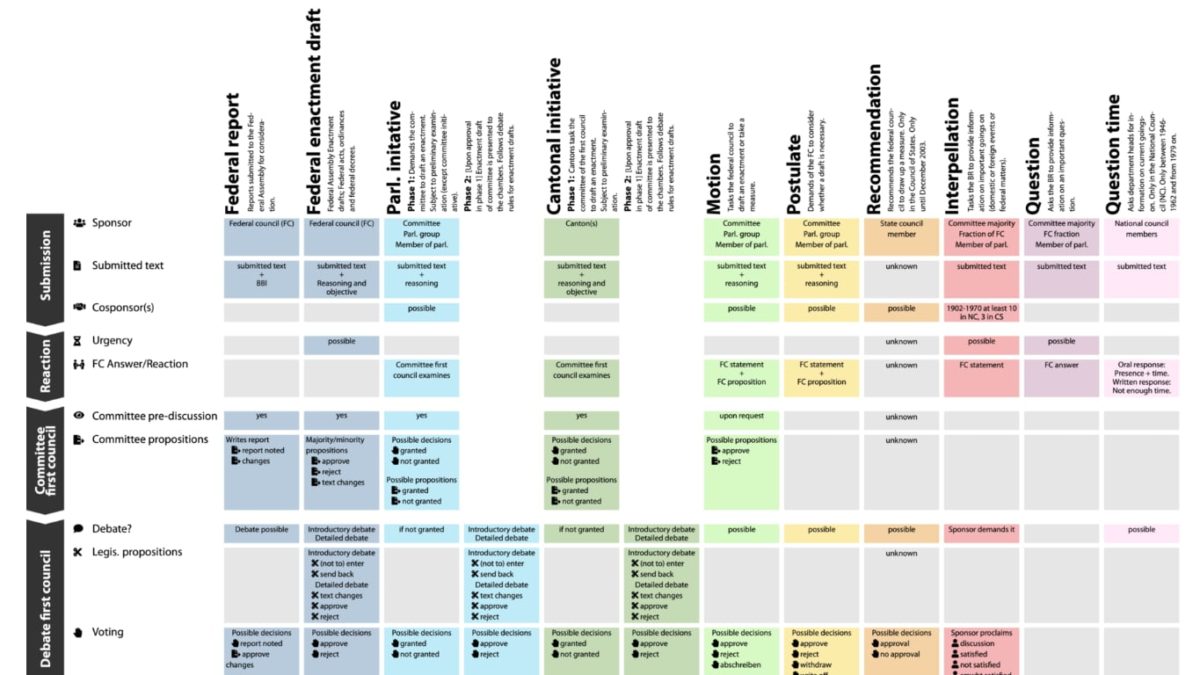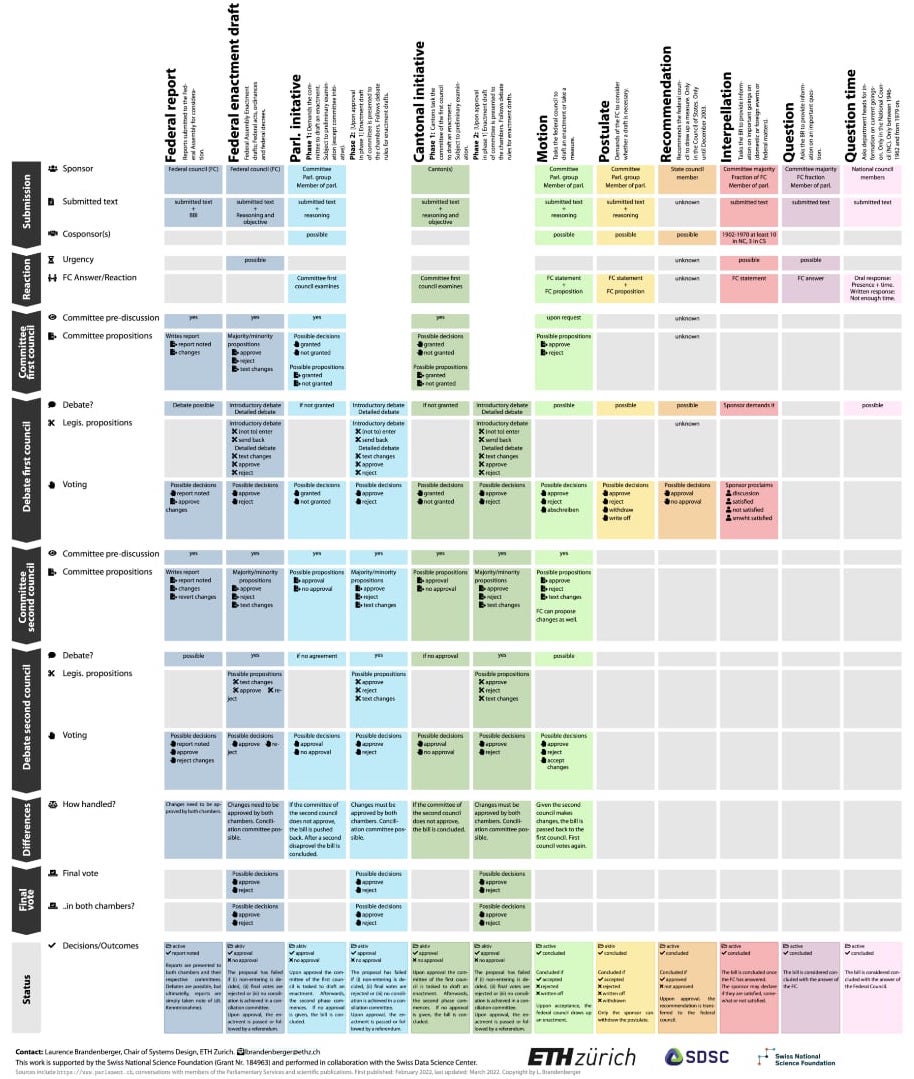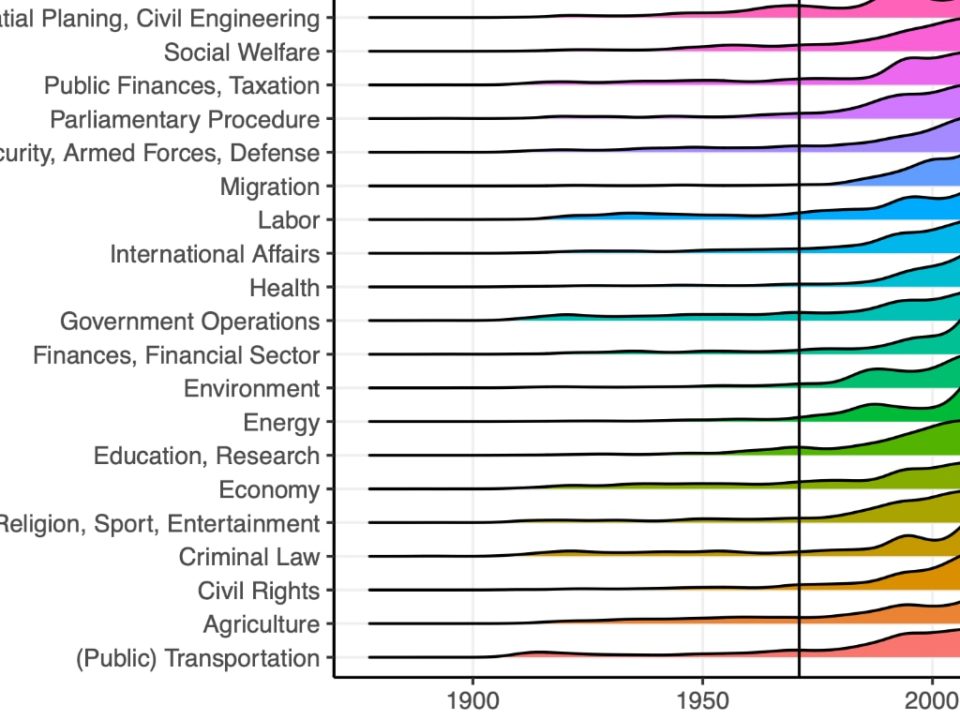Ever wonder how national policies move through parliament?
The Swiss parliament knows several different instruments to enact political change. I generally refer to these instruments as bills (dt. Geschäfte). The term "bill" is not quite correct, other researchers call them legislative drafts, legislative proposals, businesses etc.. I prefer to call them bills because it keeps things simple.
In this blogpost I present 9 types of bills and how they move through the parliament.
9 types of bills
Currently, there are 8 types of bills active in the Swiss parliament. Each bill has a distinct function, from asking a question to the federal council to proposing legislative changes.
Bills that request information
The simplest types of bills are so-called information request-bills. These are the Question (dt. Anfrage) and the interpellation (dt. Interpellation). In the National Council, there is a third instrument called question time (dt. Fragestunde) that is similar to the Question bill.
For each of these bills, the originator.i.e., the sponsor, asks for information on current goings-on, either from the federal council or the department heads.
Bills that demand action
The motion (dt. Motion), postulate (dt. Postulat) and the recommendation (dt. Empfehlung---out of date since 2003) do not ask for information, but rather task the federal council with either drawing up an enactment (motion) or checking whether an enactment is necessary (postulat) or asking them to take a measure (recommendation). The strongest instrument among them is the motion which---upon acceptance---gives the federal council two years to draw up an enactment.
Bills that propose legislative changes
Three bill types are designed to enact political change by proposing enactment drafts and handing them to the parliament for deliberation.
The three types differ in who proposes these legislative changes or measures:
The cantonal initiative (dt. Standes initative) is proposed by a canton tasks the parliamentary chambers to a) discuss a proposition for an enactment draft (phase 1) and b) draw up the enactment and discuss it again (with the ) (phase 2).
The parliamentary initiative (dt. Parlamentarische Initiative) can be proposed either by a member of parliament (MP), a committee or a parliamentary group and follows the same logic as the cantonal initiative (2-phase approach).
Third, federal enactment drafts (dt. Erlassentwürfe des Bundesrates) are proposed by the federal council and handed to the parliamentary chambers for deliberation.
8 phases of the deliberation process
The bills follow (loosely) 8 different phases in the deliberation process.
While bigger bills (i.e., enactment drafts or initiatives) obviously take longer to debate, smaller bills (i.e., questions or interpellations) are limited to deliberation in one chamber.
The deliberation process starts with the submission (phase 1) and is followed by a reaction-phase (phase 2). Reactions can be answers by the federal council in writing or committee examinations that are put in motion.
In phase 3, the committee of the first council (dt. Erstrat) deliberates. This is only viable for federal enactment drafts, initiatives and motions (upon request). In our PDF, you see that for the rest of the bills this row is grey, indicating that this phase does not pertain to them. If the committee deliberates, we list the possible propositions they may hand over to the first council.
In phase 4, the first council debates. This is generally possible for all bills except the question which is concluded upon the written response by the federal council (i.e., is never debated in the plenary).
Phases 5 and 6 are committee/plenary deliberations in the second chamber.
Phase 7 deals with differences. Whenever the two chambers need to come to a resolution but the first round of deliberations have not been successful in this regard, the bill is sent back to the first council for another debate–or they can meet in a federal assembly and discuss the differences.
Phase 8 reflect final votes–the last vote that can make the bill fail or pass. Again, this phase 8 is reserved for specific bill types (namely initiatives in the second phase and federal enactment drafts.)
Bill status
Our PDF of the bill types and their deliberation process also lists the different status a bill can have during the process. It is meant as a reference as we plan on encoding our bills in our knowledge graph with a status-type in this manner.
Disclaimer
Please note that this schema is subject to change. The legal aspects behind the deliberation process of each type of bill is complicated and it is possible that some of the information on the poster is over-simplified. The schema is designed to give an overview, to distinguish the different bill types and mark commonalities in the deliberation process between the different types.




